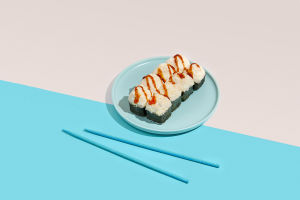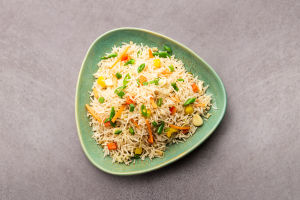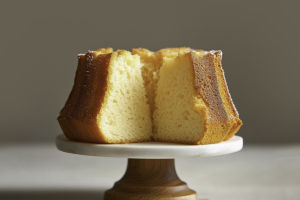Ramen, a quintessential Japanese comfort food, has captured the hearts of both locals and people around the world. But did you know that there's more to ramen than just noodles and broth?
With over 138 years of history, Japan's ramen culture is a reflection of the nation's diverse climates, local ingredients, and regional customs. It's much more than a meal; it's a part of the country's soul!
Today, let's dive into the fascinating world of Japanese ramen and explore its elements, various styles, fun facts, and dining etiquette.
The 5 Essential Elements of Ramen
To truly appreciate the beauty of ramen, we need to understand its five key components: noodles, broth, seasoning, toppings, and oils. These elements come together in a harmonious way, creating a balanced and flavorful bowl of ramen.
• Noodles: Ramen noodles come in various shapes and textures. Common types include curly, straight, and hand-pulled noodles. The thickness and texture of the noodles vary from shop to shop, with some offering thin, delicate strands while others opt for thicker, chewier varieties. The choice of flour and the water content in the dough play a crucial role in determining the noodle's texture.
• Broth: The broth is the soul of the ramen. It's typically made from a combination of meat , seafood (such as kombu and dried fish), and vegetables (like onions and garlic). The base of the broth could be a simple meat stock or a rich, umami-packed mix of both animal and plant-based ingredients.
• Seasoning: The seasoning brings the broth to life, adding a punch of flavor. Popular options include soy sauce (shoyu), salt (shio), and miso. Some ramen shops also use unique seasonings, such as chicken broth or seafood-based flavorings, to create their own signature taste.
• Toppings: Toppings are what make ramen visually appealing and add texture and flavor to the dish. Common toppings include chashu , boiled eggs, green onions, bamboo shoots, nori (seaweed), and bean sprouts. Some ramen places go the extra mile with wanton dumplings, butter, corn, and even stewed meat belly.
• Oils: It might sound surprising, but oil plays an important role in ramen. The oil not only adds richness to the broth but also helps keep the ramen warm, especially in colder regions. This element might be as simple as meat fat or garlic-infused oil, but it's vital for that comforting bowl of ramen.
Exploring the 6 Main Ramen Styles in Japan
When it comes to ramen, the variety is endless. Different regions of Japan each have their own unique take on this beloved dish, resulting in a wide range of ramen styles to choose from. Let's take a closer look at six of the most popular types of ramen.
• Yokohama Iekei Ramen: This style is all about bold, flavorful broth made from meat bones, seasoned with soy sauce. The noodles are typically thick and chewy, perfect for soaking up the rich, fatty broth. Toppings usually include spinach, chashu, and nori, and you can adjust the oil and broth richness to suit your taste.
• Jiro-style Ramen: Known for its enormous portions and extremely high-fat content, Jiro-style ramen features a thick, meat-based broth with a heap of noodles, bean sprouts, and extra toppings. You can add garlic, meat fat, and other extras to really boost the flavor and richness of the dish.
• Sapporo Ramen: Famous for its miso-based broth, Sapporo ramen is a comforting dish perfect for colder weather. The rich meat skeletal broth is topped with sautéed vegetables and meat, along with a hearty portion of noodles. Its warm, deep flavors make it one of Japan's favorite ramen styles.
• Kyoto Ramen: Unlike the delicate flavors typically associated with Kyoto cuisine, Kyoto ramen takes a more robust approach. The broth is a combination of meat and chicken bones, seasoned with a strong soy sauce, and topped with meat fat. It's hearty, rich, and absolutely delicious!
• Tokushima Ramen: This style uses a soy-based broth made from meat bones, which is darker in color. It's typically served with sweet and slightly spicy meat belly, giving it a sweet-savory contrast that makes it stand out. A raw egg is also added to the bowl, creating a creamy texture.
• Hakata Ramen: Originating from Fukuoka, Hakata ramen is known for its smooth, milky white meat skeletal broth. It's served with extremely thin, straight noodles, and the portion size is usually smaller than other ramen types. The broth is rich and intense, with extra toppings like wood ear mushrooms, sesame seeds, and pickled ginger.
Ramen Dining Etiquette: What You Need to Know
Eating ramen in Japan comes with its own set of etiquette. While ramen shops are generally casual, there are a few unspoken rules that make the experience even more enjoyable. For starters, it's customary to slurp your noodles. Slurping is not only acceptable but encouraged, as it enhances the flavors and lets the broth cool down. When it comes to toppings, you should eat them right away—don't let your egg or meat belly sit for too long! Finally, don't forget that ramen is typically enjoyed with side dishes like gyoza (dumplings) and fried chicken. It's a perfect combination of flavors that's both filling and satisfying.
Ramen's Best Companions: Side Dishes
If you want to make your ramen experience even better, consider pairing it with one of Japan's favorite side dishes. Gyoza (Japanese dumplings) are the top choice for many, with nearly 80% of people in Japan pairing them with their ramen. Other popular side dishes include karaage (fried chicken) and rice. Additionally, Japanese people love pairing their ramen with rice dishes like plain white rice, fried rice, or even a bowl of chashu don . Interestingly, the older generations in Japan tend to prefer plain rice as a side dish, while younger generations lean toward fried rice.
Which Ramen Style Will You Try?
As we've explored, ramen is much more than just noodles and broth—it's an entire cultural experience with countless regional variations. Whether you're a fan of rich, porky broths or something lighter and more delicate, there's a ramen style out there for you. Next time you're in Japan or visiting a ramen shop near you, try experimenting with different types and toppings. Who knows? You might just discover a new favorite!
So, Lykkers, which ramen style do you think you'll try first? Share your thoughts and let us know which one tempts your taste buds the most!


